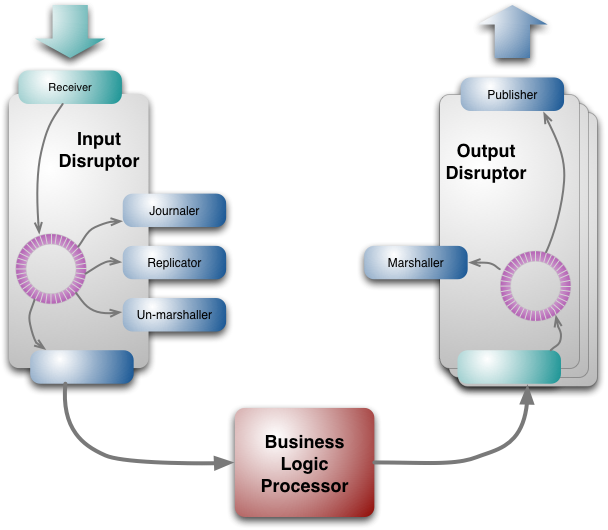tagged by: experience reports
The LMAX Architecture

LMAX is a new retail financial trading platform. As a result it has to process many trades with low latency. The system is built on the JVM platform and centers on a Business Logic Processor that can handle 6 million orders per second on a single thread. The Business Logic Processor runs entirely in-memory using event sourcing. The Business Logic Processor is surrounded by Disruptors - a concurrency component that implements a network of queues that operate without needing locks. During the design process the team concluded that recent directions in high-performance concurrency models using queues are fundamentally at odds with modern CPU design.
Decentralizing the Practice of Architecture at Xapo Bank
Xapo was founded as a Bitcoin service provider and developed into an online bank. During this transition it needed to reassess its software estate and establish an architecture capability to guide its future. It took on ideas from Domain-Driven Design, Team Topologies, and the Architecture Advice Process to develop an Architectural Advice Forum. This led to greater alignment of its software delivery teams, and a coherent technology strategy.
Democratic Political Technology Revolution
My colleague Zack Exley and I talk about the software that was used by the 2008 Obama presidential campaign. An aspect I found particularly interesting was the way in which the software enabled and interacted with the organizational approach to the campaign.
Software and Obama's Victory
Barack Obama's victory in the 2008 Presidential campaign included a significant contribution from software - particularly using the Internet. But perhaps the most interesting aspect was the interplay between advances in software and developments in the human organization of the campaign.
C3
C3 was the short name of the Chrysler Comprehensive Compensation project, a payroll project at Chrysler which has since become famous as the 'birth project' of Extreme Programming.
Nashville Project
I spent some time recently with one of my favorite ever Thoughtworks projects. It's a project that started in 1998, using then new J2EE technology. Over the years it's had a fascinating history: starting with EJBs, ripping them out, going offshore to Bangalore, coming back to Chicago. Many people have moved in and out of the project and the project has varied in head-count between 6 and 60. Overall the project has had over 300 staff-years of effort on it and weighs in at around 100 KLOC.
Roller Skate Implementation
A key property of agile development is figuring out how to make a system go live with a small subset of features. We build software for the business value it offers, the quicker we go live, the faster we get at least some of that business value.
